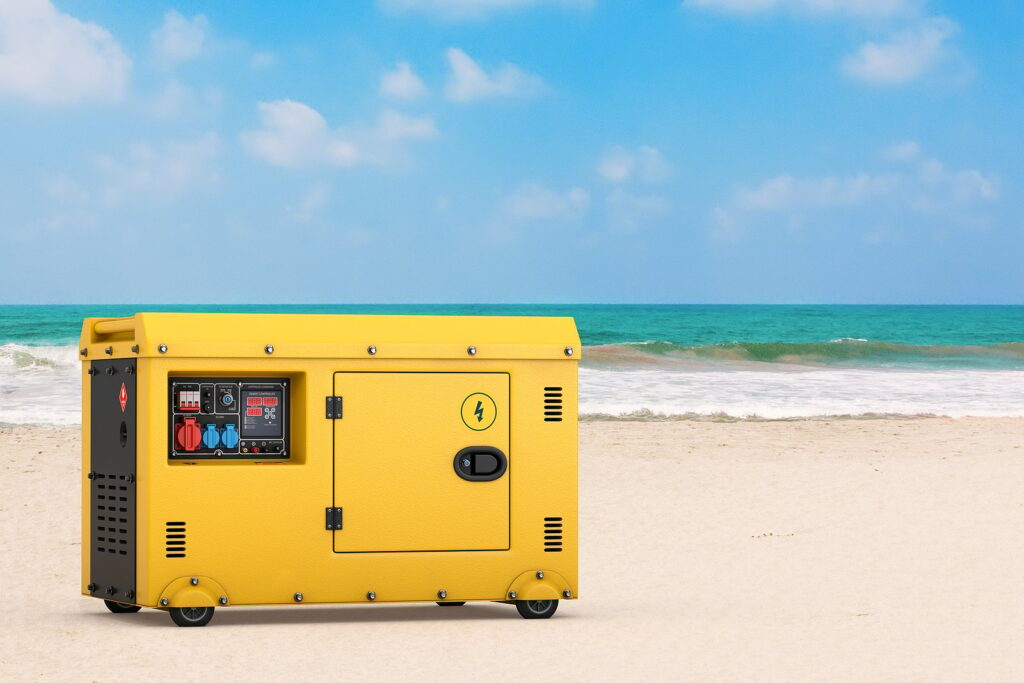Puerto Rico received three portable natural gas generators from the U.S. federal government that will supply 150 megawatts of emergency power to the island’s electricity grid. The three natural gas generators are the first part of a fleet that will supply 400 megawatts to the island. The generators are part of a larger Federal Emergency Management Agency, FEMA, initiative to build power resiliency on the island. Puerto Rico has some of the most expensive and least reliable energy of any U.S. jurisdiction and power outages, particularly during hurricane season, are frequent. Crews will install the generators before the start of the 2023 Atlantic hurricane season beginning on June 1.
FEMA is paying for 90 percent of the project and Puerto Rico’s government is paying for the remaining 10 percent as part of a deal reached last year. Because Puerto Rico is a territory of the United States, it is eligible for such aid. The total cost of the project is not yet available because it would depend in part on how long the generators will operate.
Puerto Rico recently started permanent repairs on its power grid razed by Hurricane Maria, a Category 4 storm that struck the island in September 2017. Since then, power outages have become a common occurrence, disrupting activity on the island consisting of 3.2 million people. Puerto Rico’s power grid was further weakened by Hurricane Fiona, a Category 1 storm that hit Puerto Rico’s southwest region in September 2022, sparking an island-wide blackout and causing more than $3 billion in damage to its electric system.
The federal government allocated about $12 billion — most of it for the grid reconstruction — but only 18 permanent projects totaling $88 million have been completed as of early March, which, at that pace, would take over 100 years to complete the reconstruction of Puerto Rico’s electric grid. The natural gas emergency generators will allow crews to take substations, transformers and breakers offline for extensive repairs that could take anywhere from 12 to 18 months.
Puerto Rico’s power grid was shaky even before Hurricane Maria struck, with decades of mismanagement and neglect. The utility was run by the politics of the island, which resulted in grants of free electricity for politically-popular consumers. Due to neglect, its generation units are on average 45 years old. The grid’s ongoing problems come as Puerto Rico’s Electric Power Authority struggles to restructure more than $9 billion in debt, the largest of any government agency. A majority of creditors have yet to reach a deal with a federal control board overseeing the island’s finances despite six years of negotiations. In June 2020, the island’s power company privatized transmission and distribution operations, and in January, it announced that it had selected a private company to operate and maintain its generation units.
The installation and operations of the 150 megawatts of natural gas generation as well as the supply of natural gas will be provided by New Fortress Energy Inc.’s Puerto Rico subsidiaries, NFE Power PR LLC and NFEnergia LLC, which entered into agreements with Weston Solution, Inc. The generators will be connected at the Palo Seco Power Plant in Puerto Rico, providing more flexibility to maintain and repair existing infrastructure. GeneraPR, also a New Fortess subsidiary, recently won a bid to operate and manage the island’s thermal power plants.
Conclusion
Puerto Rico’s energy system has clearly been neglected with aging plants and infrastructure needing maintenance. Long politicized, its public power system was more responsive to the political whims of elected officials than to the efficient and reliable operation of the system. This is a warning for the Biden administration. As President Biden pushes a net zero carbon electricity system by 2035 and increases political decision-making onto the U.S. grid, neglecting maintenance while pressing for intermittent renewable investment can only put the system in peril. In California, rolling blackouts resulted when electric generation shortages occurred due in part to less supply from renewable generators. California’s PG&E neglected maintenance on its transmission and distribution lines due to using its investment funds for new renewable generators to meet California’s renewable energy standard instead of performing maintenance. For this decision, the company was accused of starting wildfires and was fined.
While U.S. mainland electric generators are much younger on average than those of Puerto Rico, much of the new generators over the past decades have been wind turbines and solar panels—generators that typically operate for half the time or less than coal, natural gas or nuclear units, which means replacement and investment will be needed on a much more frequent basis than in the past. This will be the case while Biden’s agenda will need renewable plants to meet new electricity demand from the push toward electrification of the U.S. economy, from electric vehicles to bans on natural gas stoves and furnaces, and to replace retiring coal, nuclear and natural gas plants.
Further, renewable subsidies have been continually extended, most recently from the Inflation Reduction Act, and are expected to flip the U.S. electric generating capacity from reliable fossil fuels to intermittent wind and solar power dependent on the sun and the volatile wind. The production tax credit (PTC) for wind which provides tax credits for the first 10 years of the turbine’s operating life, are causing generators to invest less in maintenance and resulting in less electric output as they expire. A study found that after the 10-year period, less maintenance was performed on the unit and its output was reduced. It is believed the subsidy caused the lower maintenance and production because the same phenomena did not occur with European wind turbines that have a different subsidy basis.
President Biden needs to learn from the perils of Puerto Rico’s electricity system as well as that of Europe’s energy system where energy shortages are causing prices to spike, placing more people in energy poverty. Politicizing something as important as life-sustaining electricity does not have a good track record in the places where it has been attempted.

